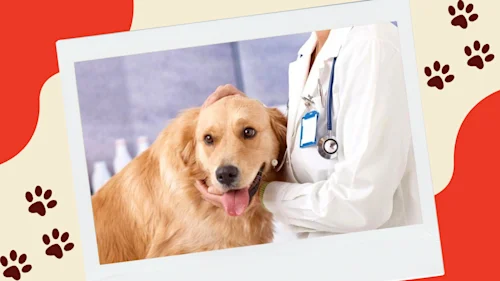
Why Are Vets Against a Raw Food Diet for Dogs?
Table of Contents
- Raw Food Diet for Dogs Vet Concern 1: Pathogens
- Raw Dog Food Vet Concern 2: Nutrition
- Raw Dog Food Diet Vet Concern 3: Lack of Data
- Raw Food for Dogs Vet Concern 4: Blockages
- Raw Meat for Dogs Vet Concern 5: Broken Teeth
- Raw Food Diet for Dogs Vet Concern 6: Worms
- Raw Food Diet for Dogs Vet Concern 7: Weight Loss
- Ready to Try a Raw Food Diet for Dogs?
If you’ve ever discussed with your veterinarian the idea of switching to a raw food diet for dogs, you may have been surprised by how vets view a raw food diet and how many vets are anti-raw. Once you’ve done your own research, you understand all the wonderful benefits of raw dog food, so it can be frustrating to deal with a vet who isn’t on board with you feeding a natural diet to your dog.
Why do vets hate raw food? How can you convince your vet that We Feed Raw really is the best choice for your dog? Let’s look at some of the top reasons why vets don't like raw food and how to address those concerns when you choose We Feed Raw.
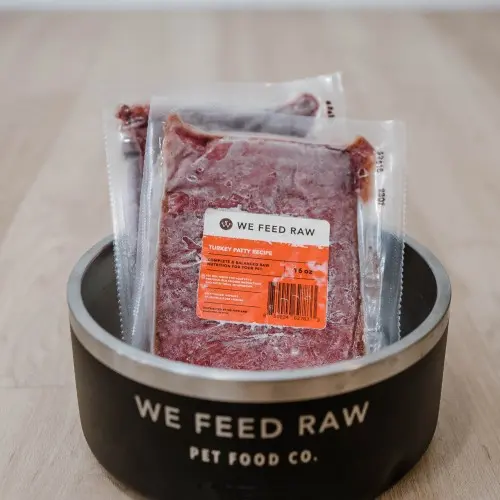
Raw Food Diet for Dogs Vet Concern 1: Pathogens
The biggest concern most vets have with the idea of a raw diet is the potential for the food to make your dog or your family sick. Vets love to fearmonger about the risks of raw pet food being contaminated with Salmonella or other pathogens—but they fail to mention that nearly ⅔ of all KIBBLE recalls from 2009 to 2018 were due to Salmonella, Listeria, or E. coli.
The Truth
Handling raw meat for your dog doesn’t put you at any higher risk than cooking chicken for yourself or eating a salad prepared by somebody who didn’t wash their hands after using the bathroom.
The same safety precautions one takes for themselves when cooking (i.e. having a separate cutting board just for meat, washing hands after touching raw meat, and disinfecting surfaces after raw meat has touched them) can also protect people who feed their dogs raw meat.
Secondly, dogs have highly acidic stomachs and short digestive tracts that are specifically designed to handle bacteria without succumbing to illness. In fact, one worldwide survey with 5,611 responses showed a less than 0.5% chance of “possible” or “probable” transmission of a foodborne pathogen (such as Salmonella, Campylobacter, and E. Coli) to a pet from their raw food diet.
If you’re still concerned about the potential for your dog or your family to get sick from raw dog food, you can take comfort in the fact that We Feed Raw uses high-pressure processing (HPP) to neutralize any potential pathogens in our food before we freeze and ship it.
What Is HPP?
High-pressure processing (HPP) is a 100% natural non-thermal cold-pressure technology that uses high water pressure to neutralize food-borne pathogens like Salmonella, E. coli, and Listeria in raw meat. Only pressure is used to reduce the presence of pathogens; this method does not use chemicals, heat, preservatives, or non-natural additives.
HPP is commonly used in the human food industry on products like guacamole, juices, sauces, baby food, seafood, hummus, jellies, soups, and more.

Raw Dog Food Vet Concern 2: Nutrition
Whether it’s as a result of seeing dogs with health problems due to imbalanced DIY raw diets, an unfounded belief that dogs need grains or starch in their diets, or other reasons, some vets are concerned that a raw diet doesn’t provide proper nutrition for pet dogs.
The Truth
While dogs CAN digest starch better than wolves, there is absolutely no evidence that dogs REQUIRE starch in their diets. And while it is possible to feed your dog an imbalanced diet if you go the DIY route, We Feed Raw is nutritionally complete and balanced, and all of our recipes meet AAFCO standards for dogs of all life stages, including large breed puppies.
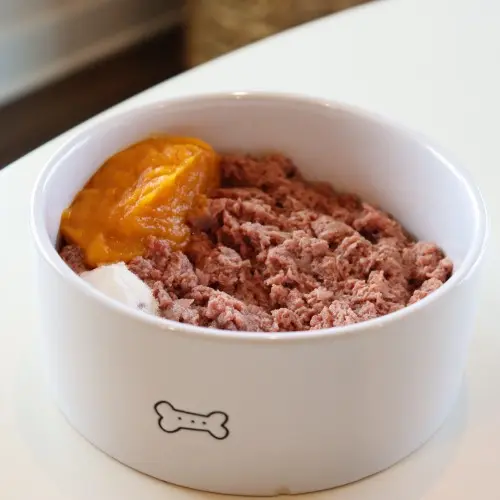
We Feed Raw Is Formulated by a PhD Animal Nutritionist
Vets receive the bare minimum training about animal nutrition in school. On the other hand, our food was formulated by a PhD animal nutritionist who has focused his career solely on animal nutrition for 40 years.
When asked about whether dogs need starch in their diets, PhD Animal Nutritionist Dr. Richard Patton said: “Research has shown that dogs have more DNA for enzymes for starch digestion than wolves, but this still leaves us with the fact that too much starch is not good. Just because a human has the enzymes to digest alcohol doesn't mean we can drink as much as we want.”
Dogs thrive on our patties, which are made from approximately 80% muscle meat (and associated fat and connective tissue), 10% secreting organs, and 10% finely ground bone. We also add a tiny amount of a vitamin and mineral mix to ensure the diet is totally complete and balanced.
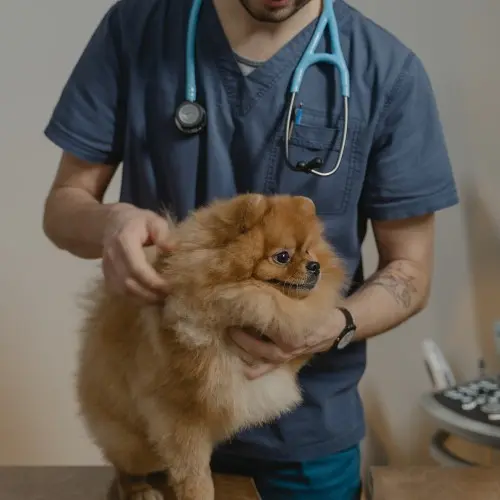
Raw Dog Food Diet Vet Concern 3: Lack of Data
Kibble companies have pumped untold amounts of money into studies over the past several decades to “prove” how healthy their food supposedly is, and many vets cite a lack of data to support a raw diet for dogs.
The Truth
Studies are being published all the time showing the benefits of a raw diet. With time, more studies will come out that tell us the same thing a dog’s anatomy shows us: dogs were designed to eat and digest raw meat better than any other type of diet.
The Studies
Here are just a few of the recent studies showing the benefits of a raw food diet for dogs:
•This study showed that a raw diet decreases inflammation and improves immune function in dogs.
•This study showed that dogs were less likely to develop canine atopic dermatitis if their mother ate a raw diet while they were pregnant and if they were fed a raw diet as puppies.
•This study showed that puppies fed raw food and table scraps were less likely to develop chronic enteropathy (CE), an inflammatory gastrointestinal disorder.
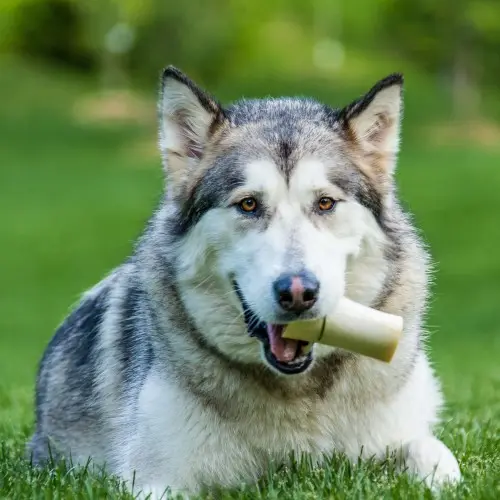
Raw Food for Dogs Vet Concern 4: Blockages
Since a proper raw diet includes bones, some vets worry that it could cause blockages in a dog’s digestive tract.
The Truth
Raw bone is much easier for dogs to digest than cooked bones, rawhide, hooves, horns, antlers, plastic, and any number of other items dogs are given to chew on. Raw bones are softer and less likely to cause blockages, perforations, or other health problems than many chews you’ll find in a pet store.
We Feed Raw Includes Finely Ground Bone
If you’re still worried about your pup swallowing too large of a piece of bone, rest easy knowing that We Feed Raw contains finely ground bone that will pass easily through your dog’s digestive tract.

Raw Meat for Dogs Vet Concern 5: Broken Teeth
Again, vets hear the word “bone” and immediately think about the potential for broken teeth.
The Truth
Raw bones are softer than the cooked bones found in pet stores, and the raw meaty bones found in many dogs’ raw diets are often smaller than the recreational bones given to dogs, meaning there’s even less likelihood of a dog breaking their teeth.
Choose We Feed Raw’s Complete Patties
We Feed Raw includes finely ground bone in our complete and balanced patties, so you and your vet never have to worry about your dog potentially breaking a tooth.
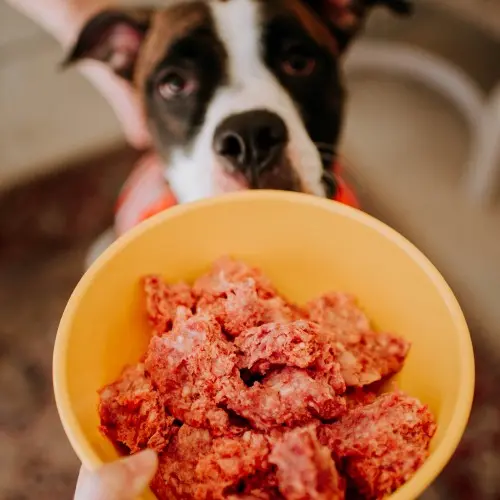
Raw Food Diet for Dogs Vet Concern 6: Worms
Considering many famous brands of commercial dog food have long been made using meat meal from dead, dying, diseased, and disabled animals that would never be allowed to be served to humans, it’s little wonder veterinarians worry about the chance of worms being found in raw dog food.
The Truth
If you get your meat from a questionable source (like roadkill you find along the side of the road), then sure, there could be potential for the meat to have worms. However, raw dog food companies like We Feed Raw source high-quality USDA meats that have been inspected for signs of parasites and worms.
How We Stay Worm-Free
At We Feed Raw, we use only human-grade USDA meats which have been properly inspected for worms and parasites. Additionally, our food doesn’t contain animal GI parts, where parasites or worms would typically be found. Finally, we deep freeze our meat as a final preventative measure to ensure no worms or cysts ever make it to your dog’s bowl.

Raw Food Diet for Dogs Vet Concern 7: Weight Loss
On a raw food diet, weight loss could be a benefit or a downside, depending on your dog’s starting weight.
The Truth
More than half of all adult dogs in the United States are at least 10-20% heavier than they should be, putting them at greater risk for heart disease, diabetes, joint pain, and other conditions that can lead to a shorter life. Many overweight dogs lose weight on a raw diet, then keep and maintain a healthy weight for the rest of their lives.
That said, dogs who start a raw diet already at a healthy weight generally don’t lose weight. If they do, feeding more should help stop unintentional weight loss.
We Tell You How Much to Feed
When you start a meal plan with We Feed Raw, we ask about your dog’s weight, age, body condition, energy level, and more, then tell you how much to feed your dog each day. If you find your dog is losing weight (and they shouldn’t be), it’s easy to alter your subscription so you can feed your dog more food each day.
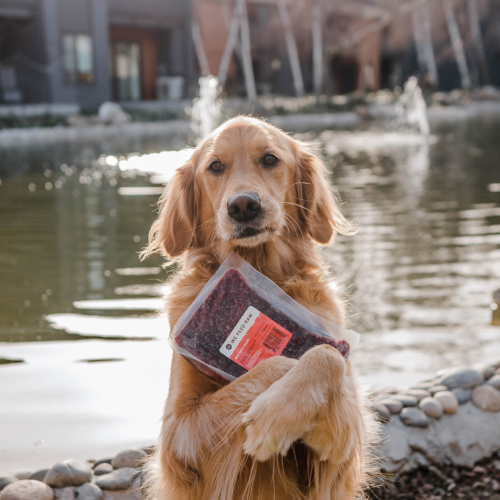
Ready to Try a Raw Food Diet for Dogs?
Now that you’re armed with all the information you need to convince your vet that you aren’t harming your dog by feeding them a raw diet, start your meal plan now. In time, your vet will see how your dog thrives on our food, and they may lose some of the skepticism they have about raw food.
After all, you can’t argue with results, and a healthy dog presents an excellent argument in favor of a raw food diet for dogs!
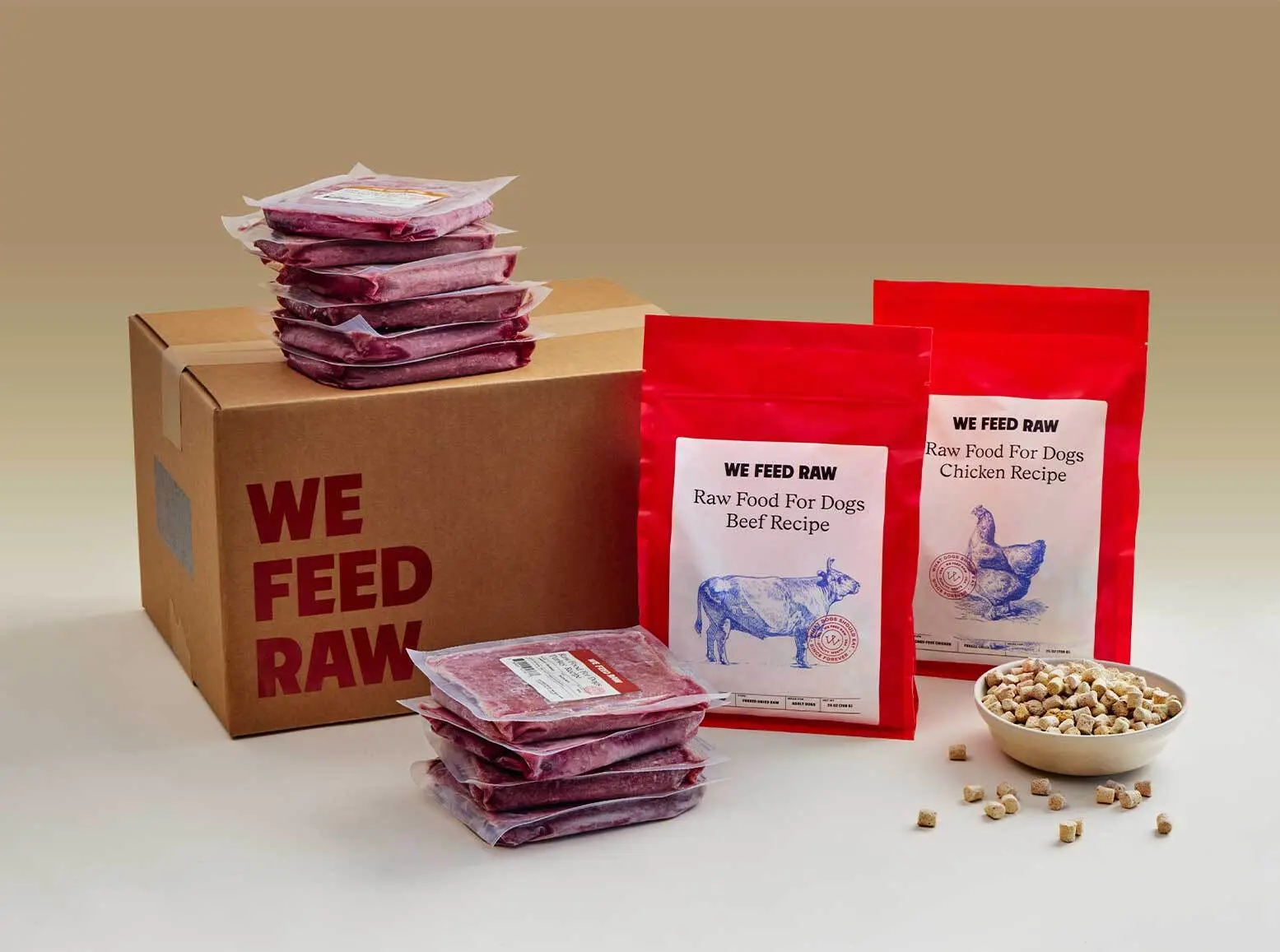
Our Meals Change Lives.
(Theirs + Yours.)
See health improvements from our raw meals in as little as 1 week.
